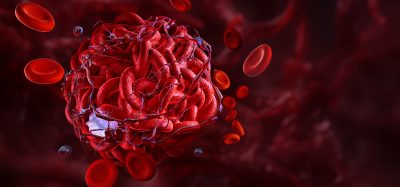Potential origins of scleroderma highlighted in new study
Posted: 5 April 2022 | Ria Kakkad (Drug Target Review) | No comments yet
Researchers at the Weizmann Institute of Science have shown that fibroblasts may be a factor in the origin of scleroderma.


A new study at the Weizmann Institute of Science, Israel have shown that fibroblasts may be a factor in the origin of scleroderma. Immune-regulating drugs that normally bring relief to people with autoimmune diseases are less effective in scleroderma, which has a higher mortality rate than other rheumatic disorders. However, the research, which was recently published in Cell, could pave way for developing a future therapy against the rare autoimmune disease.
The researchers launched a study of scleroderma using technologies developed in a lab for simultaneously exploring the genetic material of thousands of individual cells. These technologies, known as single-cell RNA sequencing, reveal each cell’s unique identity. The researchers collected skin samples from nearly 100 scleroderma patients and from more than 50 healthy volunteers who served as a control group, in the largest-ever study of this kind to explore the disease.
As scleroderma is considered an autoimmune disorder, the researchers looked for immune cell differences between the control and patient groups. However, contrary to what would be expected of an autoimmune disease, the analysis failed to reveal a characteristic, global pattern of immune abnormalities in most of the patients. Instead, surprisingly, the researchers found it were the patients’ fibroblasts that differed significantly from those of the controls.
Aside from roles in growth and wound healing, fibroblasts were thought to be mere “scaffolding” holding cells in place. The new study challenges this picture: the researchers found that fibroblasts can be divided into about ten major groups, each performing different and often vital functions, from conveying immune system signals to affecting metabolism, blood clotting and blood vessel formation. These groups can be further broken into some 200 subtypes.
Most importantly, the researchers managed to identify a subset of fibroblast whose concentration drops sharply in the early stages of scleroderma. They named these cells Scleroderma-Associated Fibroblasts (ScAFs). Whereas in healthy controls ScAFs accounted for nearly 30 percent of all fibroblasts, this percentage decreased dramatically in scleroderma patients and continued to plummet as the disease progressed.
“The reduction in the size of a critical subset of fibroblasts appears to be an early event in the course of scleroderma,” said Professor Ido Amit, one of the researchers. “It might be possible to design a therapy that will make up for this loss, slowing the progression of the disease.”
The researchers mapped out the locations of ScAFs deep within skin tissue and they tapped these cells’ RNA to determine what changes a functional ScAF into a malfunctioning cell common in scleroderma patients. They also identified biological markers correlated with specific kinds of organ damage; these markers can help physicians administer a personalised treatment, to prevent life-threatening complications. The research also revealed ScAF-related signalling pathways that can be targeted in future scleroderma therapies.
“Integrating the latest single-cell genomic research techniques with clinical data can shed new light on diseases whose origins are currently obscure,” Amit concluded.
Related topics
Disease Research, Drug Targets, Immunology, Research & Development, Therapeutics
Related conditions
scleroderma
Related organisations
Weizmann Institute of Science
Related people
Professor Ido Amit








